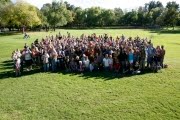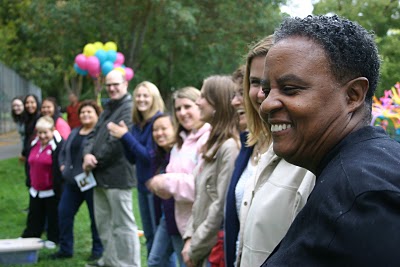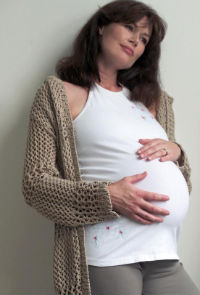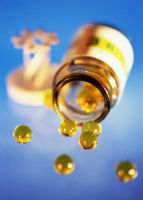Article source: http://feedproxy.google.com/~r/CaliforniaIvfDavisFertilityCenterInc/~3/lIMVM1iycu4/donated-embryos-and-adoption-as-options.html
Monthly Archives: November 2010
Nobel Prize for IVF Pioneer Highlights How Far Local Fertility Clinics Have Come in Helping Patients Get Pregnant
 As a Sacramento area fertility doctor who regularly helps patients struggling with infertility get pregnant with the help of in vitro fertilization (IVF), Dr. Zeringue said. “Dr. Robert Edwards’ win of the 2010 Nobel Prize in Medicine highlights just how far advanced reproductive therapy has come since the first succesful IVF, “test tube” baby was born in 1978“.
As a Sacramento area fertility doctor who regularly helps patients struggling with infertility get pregnant with the help of in vitro fertilization (IVF), Dr. Zeringue said. “Dr. Robert Edwards’ win of the 2010 Nobel Prize in Medicine highlights just how far advanced reproductive therapy has come since the first succesful IVF, “test tube” baby was born in 1978“.
Because of his work, the once revoluntionary and seemingly impossible task of fertilizing eggs outside of the womb is now commonplace at fertility centers across the country and around the world.
However, even as reproductive technology moves into new and exciting areas like the pre-implantation genetic screening of embryos (PGS), we will more than likely never get to look completely “under the hood” or know exactly why some people’s eggs and sperm just don’t seem to work. In many ways, this lack of knowing is what binds fertility experts with couples struggling to get pregnant.
 Everyone is looking for a “glimpse behind the curtain” to find out why the magic and mystery of conception and child birth seems evasive to some potential parents. It is this basic human link between cutting edge fertility science and a woman’s need to have a child that will drive the newest innovations in reproductive technology.
Everyone is looking for a “glimpse behind the curtain” to find out why the magic and mystery of conception and child birth seems evasive to some potential parents. It is this basic human link between cutting edge fertility science and a woman’s need to have a child that will drive the newest innovations in reproductive technology.
As Dr. Edward’s probably knows, the latest technological advances may never compete with seeing the joy patients feel when they are finally pregnant and on their way to having a baby.
Article source: http://feedproxy.google.com/~r/CaliforniaIvfDavisFertilityCenterInc/~3/ejWC_fJ1A_4/nobel-prize-for-ivf-pioneer-highlights.html
Social Media and Infertility
 Social media is changing how California IVF connects with the world. We can now be found on Facebook, Twitter and Linked-In. Social media continues to expand at a rapid pace. California IVF: Davis Fertility Center, Inc. has updated it’s web presence by adding new social media outlets. Using these new avenues for information distribution, we hope to bring the latest clinic updates and infertility news to a wider range of interested readers.
Social media is changing how California IVF connects with the world. We can now be found on Facebook, Twitter and Linked-In. Social media continues to expand at a rapid pace. California IVF: Davis Fertility Center, Inc. has updated it’s web presence by adding new social media outlets. Using these new avenues for information distribution, we hope to bring the latest clinic updates and infertility news to a wider range of interested readers. 
As social media continues to expand, California IVF will continue to evaluate new and exciting ways to bring information to a broader audience. Over the coming years, infertility clinics may rely more on social networking than static web pages. We are working on several other exciting initiatives for content delivery. Until then, please visit us at the following locations:
 California IVF: Davis Fertility Center, Inc. is a private practice infertility treatment clinic in Northern California with services for Pacific area infertility patients that need help having a baby.
California IVF: Davis Fertility Center, Inc. is a private practice infertility treatment clinic in Northern California with services for Pacific area infertility patients that need help having a baby.
Article source: http://feedproxy.google.com/~r/CaliforniaIvfDavisFertilityCenterInc/~3/aVgUICFq8yk/social-media-and-infertility-california.html
Sacramento Infertility Specialists Celebrate Conception, Pregnancy and Babies at Family Reunion BBQ
The Sacramento infertility specialists and staff at California IVF: Davis Fertility Center, hosted a family reunion BBQ on October 17th to celebrate “overcoming infertility”.

Former fertility patients who are now pregnant or have successfully delivered babies were invited to bring their families to the annual event. Most of 100 plus children who attended the were conceived using treatments offered by California IVF such as in vitro fertilization (IVF), artificial insemination (IUI), egg donors, embryo adoption or tubal reversal surgery.
Most of 100 plus children who attended the were conceived using treatments offered by California IVF such as in vitro fertilization (IVF), artificial insemination (IUI), egg donors, embryo adoption or tubal reversal surgery. 
California IVF Director Dr. Ernest Zeringue says, “Seeing patients overcome infertility and get pregnant is one of the top reasons for choosing to become a fertility specialist. Most local fertility centers do not get the chance to see patients after a positive pregnancy test and hearing a baby’s heartbeat on the ultrasound. We like to meet the children who help bring into the world and see the joy a baby brings to our former infertility patients.”
Article source: http://feedproxy.google.com/~r/CaliforniaIvfDavisFertilityCenterInc/~3/KwSeRbDU1aY/sacramento-infertility-specialists.html
Trying to Conceive After 35? Advanced Maternal Age, #Infertility and Getting Pregnant
Natural pregnancy rates are affected by age and the average woman’s chance of conceiving on her own during a 12 month period of time decreases as she gets older. Advanced Maternal age is one cause of infertility.
- 20-24 year old women have a 86% chance of conceiving in 12 months
- 25-29 year old women trying to conceive have a 78% chance of getting pregnant within a year
- 63% of women between the ages of 30-34 attain pregnancy naturally with 1 year
- At 35-39 years old, most women have a 54% chance when trying to get pregnant over the course of one year.
- After 40, a woman who is trying to conceive over 1 year has a 36% chance of pregnancy
- By 45, only 5% of women conceive a child naturally after one year of trying for a pregnancy

In addition, after 1 year of not conceiving, there is only a 5% chance of getting pregnant by waiting an additional 6 months to 1 year. Another way to view this information is by a woman’s chance of getting pregnant per month. During the first year of trying, a woman at age 23 would have an approximately 25% chance of pregnancy each month, whereas a woman at age 40 would have a 13% chance of pregnancy each month.
The decline in a woman’s chances of getting pregnant is not related to a woman’s health or how young she feels. The main cause for this decrease in the chances of getting pregnant lies within the genetics of the egg.
As a woman ages, the quality of the eggs deteriorates. The decline in quality causes an increased risk of chromosomal problems within the eggs, which leads to fewer normal eggs and an increased risk of miscarriages due to chromosomally abnormal embryos such as Down syndrome. Preimplantation genetic testing (PGD)of embryos is one way to detect chromosomally abnormal embryos.
There are not any known medications or treatments that can change the effects of age on the eggs, since the problem lies within the genetics of the eggs. When a woman’s ovary is being formed, the body sets aside cells that will make up the eggs within the ovary. A woman is born with all of the eggs she will ever have in life. The eggs have not finished their cell division and still contain 2 complete sets of chromosomes. Before an embryo can be formed, the egg must finish separating the chromosomes so that the egg will only contribute one set of chromosomes that add to the set of chromosomes provided by the sperm. Over time, the ability of the egg to separate the chromosomes normally starts to decline, and there will be an increase in the number of chromosomally abnormal eggs. Many eggs will stop living because of the abnormalities, though a woman may still ovulate normally. Some embryos will be formed from an abnormal egg, but most of these pregnancies will end in a miscarriage.
 In addition to the increase in chromosome abnormalities, the number of eggs available for fertility treatments will also decline. In a normal menstrual cycle, only one egg survives and goes through ovulation. During fertility treatments, medications are used to increase the number of eggs produced. As a woman ages, the number of eggs available, or “ovarian reserve,” decreases. Having fewer eggs available can result in lower pregnancy rates with fertility treatments. There are tests available to try to evaluate “ovarian reserve,” but these tests are often inaccurate. A normal ovarian reserve test does not imply that a woman has a better chance of getting pregnant and will not undo the effects of age on her chances of getting pregnant.
In addition to the increase in chromosome abnormalities, the number of eggs available for fertility treatments will also decline. In a normal menstrual cycle, only one egg survives and goes through ovulation. During fertility treatments, medications are used to increase the number of eggs produced. As a woman ages, the number of eggs available, or “ovarian reserve,” decreases. Having fewer eggs available can result in lower pregnancy rates with fertility treatments. There are tests available to try to evaluate “ovarian reserve,” but these tests are often inaccurate. A normal ovarian reserve test does not imply that a woman has a better chance of getting pregnant and will not undo the effects of age on her chances of getting pregnant.
There are tests that can be used to detect abnormal eggs and embryos with genetic problems. These tests are referred to as pre-implantation genetic diagnosis, PGD, and pre-implantation genetic screening, PGS. There are various techniques for looking at genetic material from embryos before pregnancy. California IVF continues to push forward with new clinical infertility treatments to help with recurrent pregnancy loss, testing eggs before pregnancy, and gender selection.
When an egg from a donor is used, pregnancy rates are generally not affected by age. Women who are interested in becoming an egg donor are younger, screened for infectious diseases and generally provide excellent chances for another woman to become pregnant. Additionally, women using donor eggs would be more likely to have extra embryos which could be used in a frozen embryo transfer so the overall pregnancy rate is even higher than depicted. Donor eggs are often used as an option for women who are unsuccessful using their own eggs or who have reached an age where their chances using their own eggs become too low.
Article source: http://feedproxy.google.com/~r/CaliforniaIvfDavisFertilityCenterInc/~3/nkgATc8xyXE/trying-to-conceive-after-35-advanced.html
Pregnancy Success Rates May Improve With Genetic Testing of Day 5 Embryos
 The “buzz” at the ASRM Annual Meeting in Denver, October 2010, was biopsy of Day 5 (blastocyst) embryos with subsequent genetic analysis. Current embryo biopsy techniques focus on Day 3 embryos for pre-implantation genetic testing (PGD) of embryos.
The “buzz” at the ASRM Annual Meeting in Denver, October 2010, was biopsy of Day 5 (blastocyst) embryos with subsequent genetic analysis. Current embryo biopsy techniques focus on Day 3 embryos for pre-implantation genetic testing (PGD) of embryos.
Day 3 embryos are usually composed of 6-8 cells, and one cell is removed, fixed to a slide, and analyzed in the lab. Having only one cell to work with, though, can be a negative in several ways. Firstly, there’s always the chance that the material from one cell will not be enough to provide a sample for analysis. Secondly, there is the somewhat complicated issue of mosaicism.
As cells grow and divide, genetic mistakes can happen. Since the embryo is made up of several different dividing cells, it’s possible that some of the cells divide normally, while some of them create genetic mistakes during their division.
The result can be a mosaic embryo—one that has some normal cells and some genetically abnormal ones. The concern with embryo biopsy on Day 3 is that with removing only one cell, how do you know that all the other cells have the same genetic makeup?
Studies show that embryos that make genetic mistakes have a high tendency to correct themselves by the time they reach the blastocyst (Day 5) stage. In other words, the normal cells continue to grow and divide, forming a healthy embryo, and the genetically abnormal cells disperse. This phenomenon is called self-correction. So a significant concern with Day 3 embryo biopsy is that a single cell can be analyzed and identified as abnormal, leading to discarding of that embryo, while in fact, it could undergo the process of self-correction, leading to the discard of a perfectly fine embryo.
Day 5 embryo biopsy has definite advantages over Day 3 biopsy. Day 5 embryos generally have 100-150 cells, so usually 10-15 cells can be removed without harm. This allows a larger sample to test. The test is also run at the later, Day 5, stage, which allows for self-correction to happen. Also, by the time the embryo reaches the Day 5 stage, it has formed two separate structures: the inner cell mass, which can become a baby; and the trophectoderm, the outer cells which will form the placenta. The cells removed in the biopsy come from the trophectoderm, leaving the inner cell mass intact.
 The major disadvantage of Day 5 biopsy is in the time it takes to run the genetic tests. The blastocyst stage is when the embryo would begin to burrow in and implant in a woman’s uterus. So by the team an embryo reaches blastocyst stage in the lab, it can only be transferred into a uterus or frozen for storage. Genetic testing may take several days, so an embryo that is biopsied on Day 5 must be frozen until the results are available. This would involve a scheduled future transfer of the normal embryo in another cycle, after preparing the uterus with hormones. Fortunately, improvement in embryo freezing techniques, primarily the use of vitrification, has made this option a successful alternative. It was revealed at the 2010 ASRM Annual Meeting that some centers are also working to shorten the time the diagnostic testing takes, so that the biopsy could be done early on Day 5 and allow transfer early in the morning the following day, with excellent pregnancy rates.
The major disadvantage of Day 5 biopsy is in the time it takes to run the genetic tests. The blastocyst stage is when the embryo would begin to burrow in and implant in a woman’s uterus. So by the team an embryo reaches blastocyst stage in the lab, it can only be transferred into a uterus or frozen for storage. Genetic testing may take several days, so an embryo that is biopsied on Day 5 must be frozen until the results are available. This would involve a scheduled future transfer of the normal embryo in another cycle, after preparing the uterus with hormones. Fortunately, improvement in embryo freezing techniques, primarily the use of vitrification, has made this option a successful alternative. It was revealed at the 2010 ASRM Annual Meeting that some centers are also working to shorten the time the diagnostic testing takes, so that the biopsy could be done early on Day 5 and allow transfer early in the morning the following day, with excellent pregnancy rates.
About Dr. Laurie Lovely:
Sacramento Infertility Specialist Dr. Laurie Lovely is board certified by the American Board of Obstetrics and Gynecology (ABOG) in both Obstetrics and Gynecology and Reproductive Endocrinology and Infertility. She has received a research grant from the American College of Obstetricians and Gynecologists for her work on the effects of hormones and the endometrial lining. She presented a prize-winning paper on the effects of stress and infertility at an annual meeting of the American Society for Reproductive Medicine. Additional professional interests include pubertal problems and reconstructive tubal surgery including tubal ligation reversals.
Article source: http://feedproxy.google.com/~r/CaliforniaIvfDavisFertilityCenterInc/~3/xWEFsDYTZUI/pregnancy-success-rates-may-improve.html
Infertility Supplements and Dietary Aids
 Infertility problems affect millions of couples in America. As the stress of infertility increases, it is common for people to search for answers on the Internet and printed sources such as magazines. Much of the information and advice available to women trying to conceive has not been written or reviewed by an infertility specialist. Even worse, much of the information is simply not true, and can lead to couples to take medications or treatments that may actually decrease their chances of getting pregnant.It is important to understand that any medication or dietary aid that is labeled with the words “nutritional supplement” or “dietary aid” are classified as food items by the Food and Drug Administration (FDA). This means that these supplements are not regulated by the same laws that regulate medications. Laws pertaining to medications require that new medications are equivalent or better to existing medications, and these medications can not be misrepresented in terms of their effects and side effects. Nutritional supplements do not even have to contain any medications, and there is not government oversight to protect against harmful contamination in these medications.
Infertility problems affect millions of couples in America. As the stress of infertility increases, it is common for people to search for answers on the Internet and printed sources such as magazines. Much of the information and advice available to women trying to conceive has not been written or reviewed by an infertility specialist. Even worse, much of the information is simply not true, and can lead to couples to take medications or treatments that may actually decrease their chances of getting pregnant.It is important to understand that any medication or dietary aid that is labeled with the words “nutritional supplement” or “dietary aid” are classified as food items by the Food and Drug Administration (FDA). This means that these supplements are not regulated by the same laws that regulate medications. Laws pertaining to medications require that new medications are equivalent or better to existing medications, and these medications can not be misrepresented in terms of their effects and side effects. Nutritional supplements do not even have to contain any medications, and there is not government oversight to protect against harmful contamination in these medications.
 Most of the dietary supplements advertised to help with infertility have no evidence supporting the proposed benefits. Unfortunately, the nutritional supplement market for infertility is a multibillion dollar industry. As long as there are individuals that will believe the marketing hype surrounding infertility diet aids, these products will continue to be sold. These products are frequently packaged like medications and the advertisements frequently report that the effects are clinically proven. Other than a potential false advertising claim, there are no restrictions on how these supplements are marketed, and no requirement to test the quality or effects of these supplements.Scientific studies on some of these compounds showed very harmful contamination and broad ranges of chemicals and hormones that can have harmful effects. Infertility specialists are frequently asked for their opinion about these supplements and often encounter resistance when patients are advised to stop using these supplements. Most of this faith placed in these nutritional supplements comes from the marketing and hype placed on these nutritional aids and vitamins. This marketing does not take into account the well-being of infertility patients, but instead seeks only to make a profit. Infertility doctors are committed to the health and well being of their patients and keep up to date with all of the evidence-based treatments designed to improve an infertile couple’s chances of having a baby.
Most of the dietary supplements advertised to help with infertility have no evidence supporting the proposed benefits. Unfortunately, the nutritional supplement market for infertility is a multibillion dollar industry. As long as there are individuals that will believe the marketing hype surrounding infertility diet aids, these products will continue to be sold. These products are frequently packaged like medications and the advertisements frequently report that the effects are clinically proven. Other than a potential false advertising claim, there are no restrictions on how these supplements are marketed, and no requirement to test the quality or effects of these supplements.Scientific studies on some of these compounds showed very harmful contamination and broad ranges of chemicals and hormones that can have harmful effects. Infertility specialists are frequently asked for their opinion about these supplements and often encounter resistance when patients are advised to stop using these supplements. Most of this faith placed in these nutritional supplements comes from the marketing and hype placed on these nutritional aids and vitamins. This marketing does not take into account the well-being of infertility patients, but instead seeks only to make a profit. Infertility doctors are committed to the health and well being of their patients and keep up to date with all of the evidence-based treatments designed to improve an infertile couple’s chances of having a baby.
Vitamins may play a role in overall health, however, patients do not need to take anything more than a multivitamin or prenatal vitamin. It is recommended that women trying to conceive take at least 400 micrograms of folic acid (folate). In certain circumstances, women may be advised to take additional vitamins or other nutritional supplements, but should do so only under the advice of a physician or other health care provider.
 California IVF: Davis Fertility Center, Inc. does not support the use of dietary supplements or nutritional aids, and remain concerned that many of these nutritional aids may have harmful effects in addition to being very expensive. There is no evidence that nutritional supplements for male and female infertility will have any benefits on the chances of having a baby. Please inform your physician of any and all nutritional aids, dietary supplements and vitamins that you are taking.Our infertility doctors fully support and educate our patients about healthy eating and diet changes that can help women get pregnant. Diet can have a big effect on PCOS and having a baby. A balanced diet and healthy lifestyle including exercise and avoiding smoking and smokers can help improve a woman’s fertility health and chances of conceiving.
California IVF: Davis Fertility Center, Inc. does not support the use of dietary supplements or nutritional aids, and remain concerned that many of these nutritional aids may have harmful effects in addition to being very expensive. There is no evidence that nutritional supplements for male and female infertility will have any benefits on the chances of having a baby. Please inform your physician of any and all nutritional aids, dietary supplements and vitamins that you are taking.Our infertility doctors fully support and educate our patients about healthy eating and diet changes that can help women get pregnant. Diet can have a big effect on PCOS and having a baby. A balanced diet and healthy lifestyle including exercise and avoiding smoking and smokers can help improve a woman’s fertility health and chances of conceiving.
Article source: http://feedproxy.google.com/~r/CaliforniaIvfDavisFertilityCenterInc/~3/R2II3CGlTbw/infertility-supplements-and-dietary.html
Sacramento Fertility Center Specialists Explore Advances In Infertility Treatment at ASRM
Sacramento infertility specialists Dr. Laurie Lovely and Dr. Ernest Zeringue attended the annual meeting for the American Society for Reproductive Medicine, or ASRM in Denver Colorado. This meeting is a gathering point for scientists and clinical practitioners from fertility practices worldwide. Clinics and researchers share their techniques and scientific discoveries for the purpose of advancing the field of reproductive medicine. This sharing of ideas usually serves as valuable means of evaluating developing techniques and technology, and often leads to the introduction of new treatment options for infertility patients.
There have been many exciting advancements in the infertility treatment arena. The two most notable topics are oocyte preservation, or egg freezing for the purpose of saving a woman’s fertility for the future, and pre-implantation genetic diagnosis and screening (PGD/PGS). Both egg freezing and PGD/PGS advancements will offer immediate changes in the way infertility treatments are rendered. California IVF: Davis Fertility Center, Inc. is at the forefront of these new technologic developments as we continue to bring our patents the latest and most advanced options for overcoming infertility.
Pre-implantation genetic screening PGS is used when embryos are tested for the presence of a genetic abnormality such as an abnormal number of chromosomes. Pre-implantation genetic diagnosis, PGD, is used when there is a known risk of a specific genetic disease when there is a family history of a specific genetic disease. PGD is often used to refer to both PGD and PGD services collectively, although this is technically inaccurate. PGD/PGS has been used for several years, but the limitations of the technology and the types of genetic tests available for infertility treatments has been a limiting factor in the success of the testing. High costs of the tests have also limited the use of the testing in addition to in vitro fertilization, IVF.
Recent advancements in PGD/PGS has allowed fertility clinics to move away from FISH and embrace SNP and aCHG for genetic screening of embryos. These newer tests have the advantage over existing FISH technologies in that SNP and aCGH can look at all chromosome pairs. There are 23 pairs of chromosomes with one pair used for sex determination. A test will look for 24 chromosomes, 22 normal pairs of chromosomes plus the X and Y chromosomes which determine if the baby will be a boy or a girl. Testing for X and Y chromosomes has also been useful for gender selection – determining a boy or girl with IVF before the embryo is used to make a pregnancy.
Refinements to the PGD/PGS process were presented at ASRM. These latest changes will likely lead to an increase in the number of PGD/PGS cases performed in the United States. By performing the embryo biopsy on day 5 using a laser and a precision microscope, the genetic test results have a higher prediction rate of a normal pregnancy than a biopsy performed on day 3. Several researchers and infertility clinics reported pregnancy rates as high as 85 to 90% when PGD/PGS was used on a day 5 embryo. While these are early studies and need additional verification, it seems very clear that the future of embryo biopsy and genetic testing is about to make a significant change to the field of in vitro fertilization.
The addition of day 5 embryo biopsy and genetic testing advances our capabilities and improves upon our 5 year experience with genetic testing and embryo biopsy. Having egg freezing capabilities opens the doors for new avenues in donor egg banking, making the process of egg donation and infertility treatments with donor eggs less complicated. Freezing eggs also offers a women the opportunity to save her fertility in the face of cancer treatments such as chemotherapy or radiation therapy. Oocyte cryopreservation will soon offer women the opportunity to preserve their fertility for a later time in life when her own chances of conceiving may be reduced due to the effect of age on egg quality.
Thanks to the scientific community and professional sharing of knowledge and scientific study, ASRM members can remain up to date with the latest changes. California IVF: Davis Fertility Center, Inc. continues to change our practice as new developments become available. To this end, many fertility centers and patients and indebted to the efforts of ASRM. According to the ASRM website, the Vision of the American Society for Reproductive Medicine (ASRM) is to be the nationally and internationally recognized leader for multidisciplinary information, education, advocacy and standards in the field of reproductive medicine. The ASRM is a non-profit organization whose members must demonstrate the high ethical principles of the medical profession, evidence an interest in infertility, reproductive medicine and biology, and adhere to the objectives of the Society.
Dr. Laurie Lovely and Dr. Ernest Zeringue are proud members of ASRM and will continue to leverage the knowledge and research benefits of ASRM to realize the goals and dreams of our patients – having a baby.







